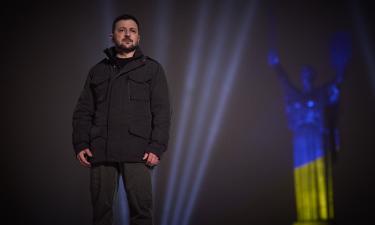On June 3rd Russian Orthodox Church commemorates St. Emperor Constantine and Empress Helena
On June 3rd the Russian Orthodox Church commemorates Saints Emperor Constantine and Empress Helena.
Saint Emperor Constantine /306-337/, whom historians called the Great, was the son of Caesar Constantius Chlorus, who used to rule in Gaul and Britain in the West of the Roman Empire. Constantius Chlorus did not persecute Christians, while in the rest of the Roman Empire they were severely victimized.
Saint Empress Helena, the mother of Emperor Constantine, was a Christian and brought up her child to respect the religion.
After inheriting his father's power the first thing Saint Constantine did was to proclaim Christianity freedom in his countries. In a number of wars he defeated his enemies, Pagan fanatics. When Constantine was begging God to give him a sign inspiring his army to fight bravely, a shining Cross reading "Win with it" appeared in the sky.
When he became a sovereign ruler of the Roman Empire's Western part, in 313 Constantine issued the Milan toleration edict, while in 323, having ascended the throne of the whole Roman Empire, he also made the Milan edict valid in the Eastern part of the Empire. For the first time after 300-years persecution Christians got an opportunity to openly practice their religion.
Besides, Constantine moved his capital from the Pagan Rome to the east, Byzantium, which came to be renamed into Constantinople. Being deeply convinced that the Christian religion alone could unite the heterogeneous Roman Empire, Constantine did everything to support the Orthodox Church, returned preachers from their exiles, built churches and helped the clergy.
The Emperor sent his mother, Empress Helena, to Jerusalem to find the Holy Cross, on which Jesus Christ had been crucified. In 326 the search was crowned with success. For great services before the Church and hard work to find the Holy Cross Empress Helena was called Saint.
When the Empire faced destructive for the Church heresy of Arius, who had dared to deny the divinity of God's Son, Constantine ordered to summon the First Oecumenical Council. Therefore, in 325 a total of 318 bishops gathered in the town of Nicea. The Council denounced the Arius heresy and made up a Christian symbol - a fundamental Orthodox dogma.
Subscribe to Pravda.Ru Telegram channel, Facebook, RSS!




